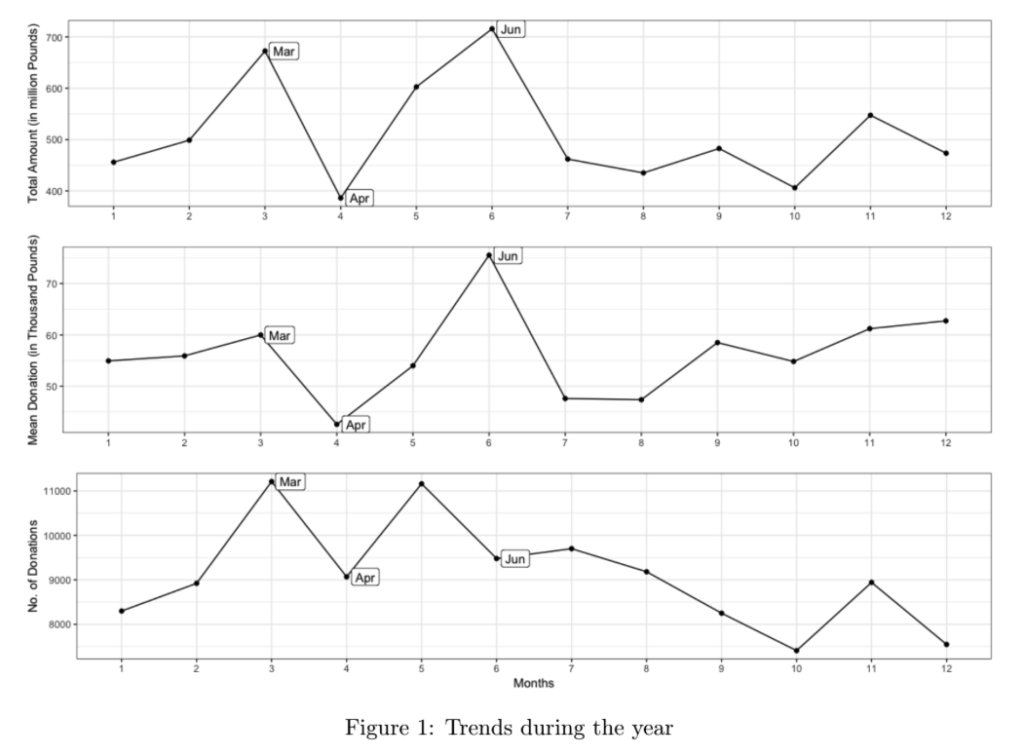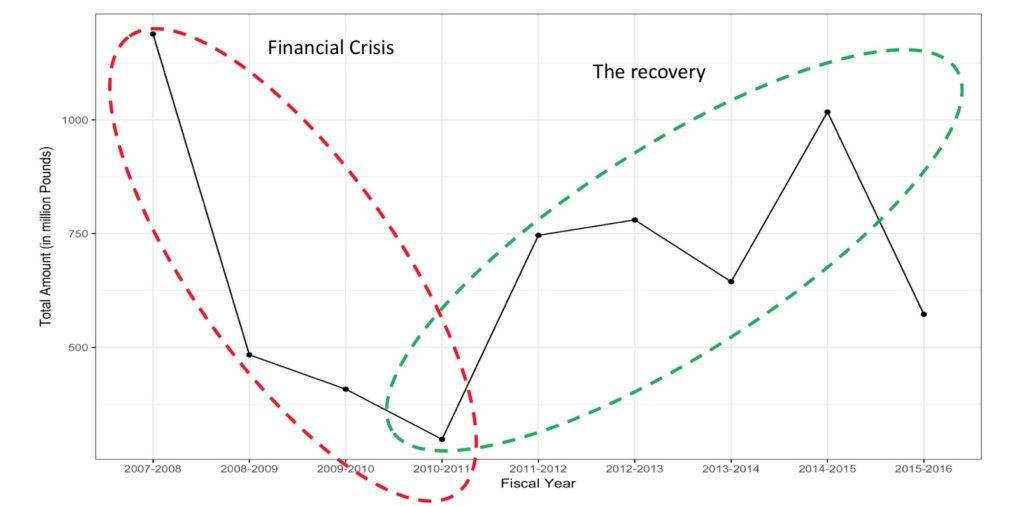Data Science students take deep dive into 10 years of Big Lottery Funding
360Giving is pleased to work with the research organisations and people not familiar with UK funding to check the usability and robustness of the data.

Each year businesses, charities and local organisations are linked up with Data Science students from Lancaster University to give us a chance to work with large, complex data sets and solve real world issues. For this project with 360Giving, we were tasked with analysing all the grants made by the Big Lottery Fund between April 2007 and March 2016 shared using the 360Giving Open Data Format, to see if we could find emerging funding patterns or themes. We explored the data using three questions:
1. Do particular projects get more funding than others?
We quickly identified some interesting aspects of the data, including one donation which was vastly larger than all the others. When we delved a little deeper, we discovered that although it was recorded as one grant, the funding was split between many different sub-projects across the UK.
We also uncovered some trends in the data. For example, the Reaching Communities programme received the most funding for 7 years out of the 10 in the dataset, but the highest number of grants awarded each year is for the Awards for All programme. This is the result of the Awards for All programme having a lower upper threshold of £10,000 than the Reaching Communities programme which allocates much larger individual awards.
2. Does the amount of funding given vary over time?
There was a noticeable drop in the amount of funding awarded between 2007/08 and 2008/09, followed by a steady decline to a low at 2010/11. This corresponds very closely with the financial crisis, and a previous study carried out by the Charities Aid Foundation also found, the total amount of charitable giving declined during the recession.

Trends across the years
3. Does the amount of funding given vary geographically?
The geographical analysis shows the vast majority of funding going to London and other large cities. This might be because this is where the greatest number of people live and so there is the greatest charitable need; or it might be the ‘headquarter effect’ with most being located in big cities.
The project was a valuable chance to work with a large funding dataset covering a long time period. It allowed us to go beyond working with the small datasets created to serve a specific teaching purpose, and explore how data is collected, curated and analysed in practice.

Trends in geography
This blog was written by Frances Biggin from the MSc in Data Science at Lancaster University as an outcome of a group project to work on 360Giving data. The MSc is a one-year taught course with an emphasis on analysing real world ‘Big Data’ using statistical and computing techniques.
